Anemonefish: There are 28 different species of anemonefish ...
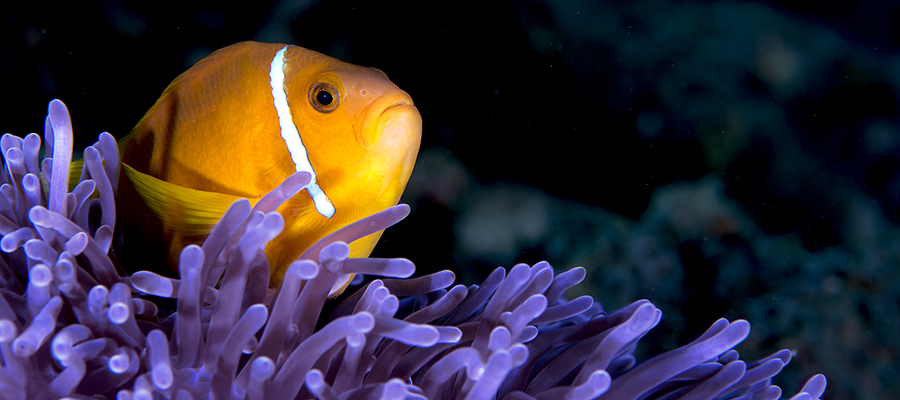 The blackfinned anemonefish can only be found in the Maldives
The blackfinned anemonefish can only be found in the Maldives
Did you know? ...
+ Anemonefish+ Frogfish
+ Lionfish
+ Mandarinfish
+ Moray eels
+ Rhinopias
+ Ghost pipefish
+ Sea cows
+ Seahorses
The first time I saw an anemone fish, I looked very surprised! My first thought was something like: 'But, this is not Nemo! This fish looks totally different!' In fact, the three band anemone fish which is playing the lead role in the Disney/Pixar movie 'Finding Nemo' actually belongs to one of the 28 species of anemone fish.
Anemonefish belong to the family of the damsel fish. They can be found in the Red Sea, the Indian and the Pacific Ocean. However, in the Caribbean, they are not found at all. The colour varies depending on the species from orange, orange-red, burgundy and even yellow or black. Most species have white bars or stripes on their bodies. As a result, they are all called sometimes clownfish. Their lifespan ranges from 3 to 6 years, and they are usually not bigger than fifteen cm.
Despite of the fact that anemones are highly toxic all types of anemone fish life between these stinging tentacles. Although the benefit is therefore clear: here they are protected from predators. Most anemone fish species only life in one kind of anemone but there are species such as the Clarks anemone fish that lives in at least ten different types of anemones.
Anemonefish are living in a group. Within a group, there is only one female and she mates only with the largest male of the group. All anemonefish are born with active male and in-active female sex organs. When the female in the group dies, the dominant male gets a sex change and he becomes the new female in the group.
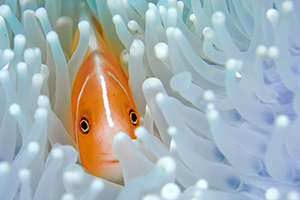 Pink Anemonefish
Pink Anemonefish
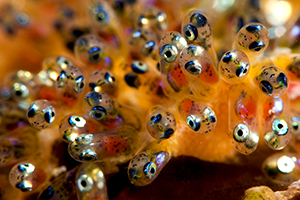 Eggs of the anemonefish
Eggs of the anemonefish
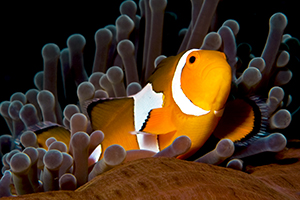 Clown anemonefish
Clown anemonefish
In 2011 during a dive I was able to witness the laying of the eggs. First, a spot is chosen just outside the anemone and both male and female,
start to clean this place by scraping it with their mouths. Putting the eggs themselves is done shortly after the cleaning and
it usually takes place in the afternoon. The female is now slowly swimming just above the cleaned spot and sticks her eggs against the surface.
The eggs are now very bright orange. Immediately just after, the eggs are sprayed with the male?s sperm to fertilize them.
The laying and fertilizing of the 150-200 eggs can last even up to 2 hours! The coming weeks the male is doing everything to get a perfect breed.
By biting into the eggs he removes the dead and moldy eggs. Together with the female,
he swims just above the eggs in order to move them and so provide them by new oxygen. Gradually the eggs colour brown.
When the eggs are losing their brown colour the eyes of the young anemone fish become visible.
And between eight to fourteen days later, the young anemone fish are born.
This cycle is very rarely seen but can nevertheless be repeated every 3 weeks.
Because of their speed anemone fish are very difficult to photograph. They never sit still, move fast and they are constantly hiding between the tentacles of their anemone. But there are species however, who defend their house so fanatically they even come out of their anemone and attack your finger or even bite you viciously.
Species of anemonefish :
Because of their speed anemone fish are very difficult to photograph. They never sit still, move fast and they are constantly hiding between the tentacles of their anemone. But there are species however, who defend their house so fanatically they even come out of their anemone and attack your finger or even bite you viciously.
Species of anemonefish :
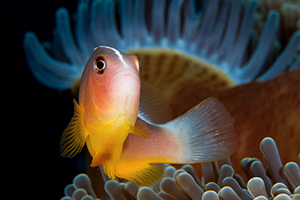 Amphiprion akallopisos
Amphiprion akallopisos
 Amphiprion allardi
Amphiprion allardi
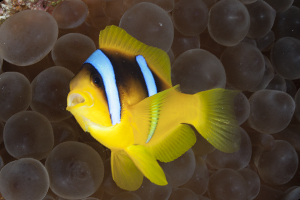 Amphiprion bicinctus
Amphiprion bicinctus
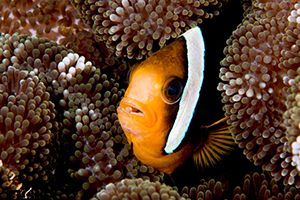 Amphiprion clarkii
Amphiprion clarkii
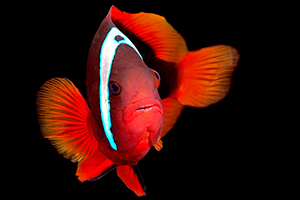 Amphiprion melanopus
Amphiprion melanopus
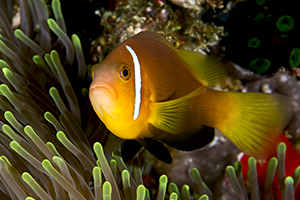 Amphiprion nigripes
Amphiprion nigripes
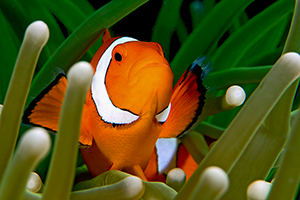 Amphiprion ocellaris
Amphiprion ocellaris
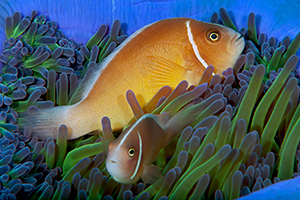 Amphiprion perideraion
Amphiprion perideraion
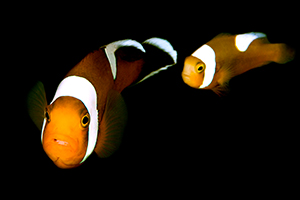 Amphiprion polymnus
Amphiprion polymnus
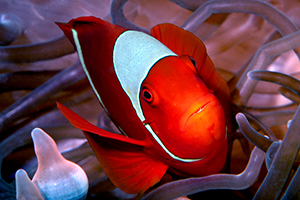 Amphiprion rubacinctus
Amphiprion rubacinctus
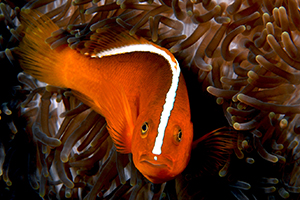 Amphiprion sandaracinos
Amphiprion sandaracinos
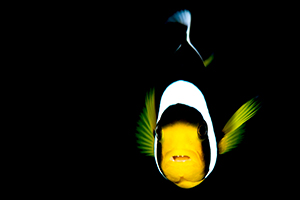 Amphiprion sebae
Amphiprion sebae